|
|
Post by meizwang on Jun 4, 2012 4:24:24 GMT
In the description of S. leucophylla Hurricane Creek White, only individuals that exhibit the pure snow white colorations are considered the Hurricane Creek White cultivar. All plants exhibiting any red coloration are not considered hurricane creek white. However, time has shown that there needs to be modifications to this definition, as some "pure white" clones can exhibit red colorations under certain environmental conditions. Below are recent photos of S. leucophylla Hurricane Creek White clone F, and to belabor the point, environmental conditions greatly affect the color of these clones. It seems as though dividing may impact the formation of anthocyanins in these plants-only time and a lot more observation will tell. Certainly, other factors can also influence anthocyanin formation. These are pictures of HCW clone F, taken June 3rd, 2012. This plant was recently divided last winter: 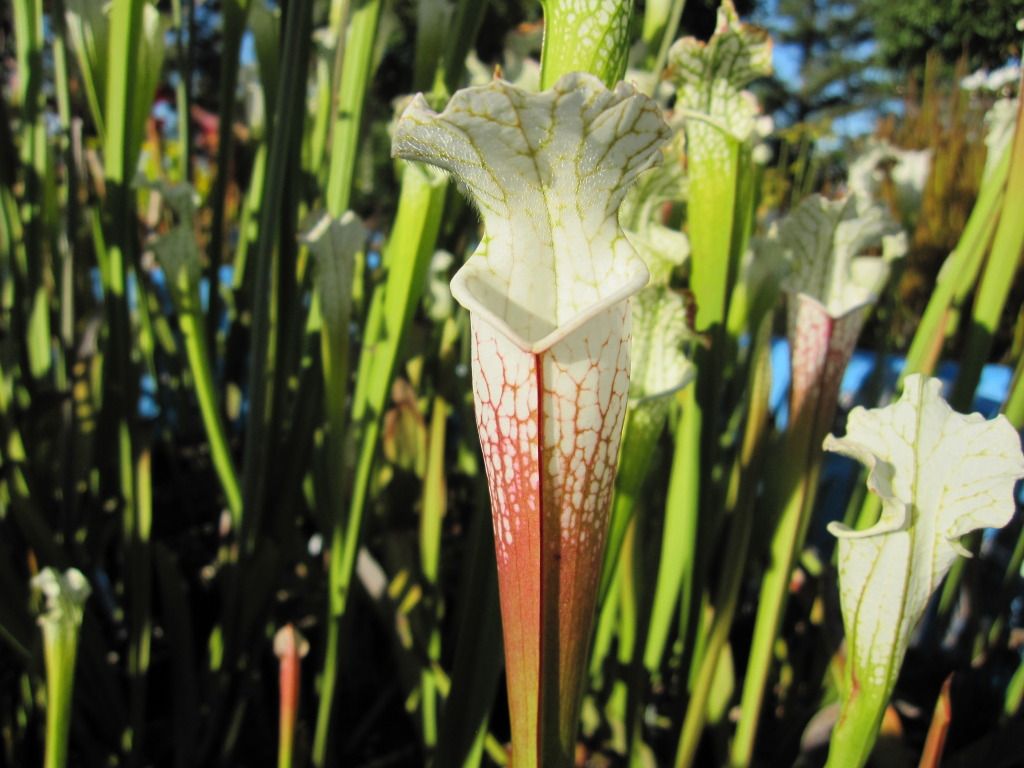 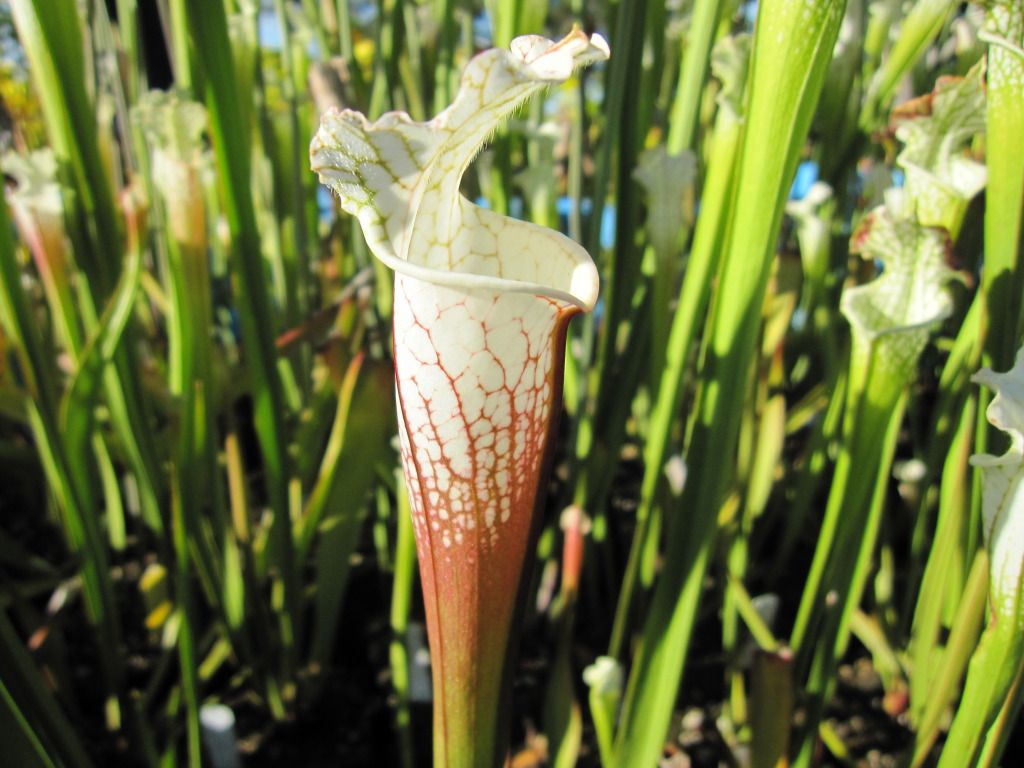 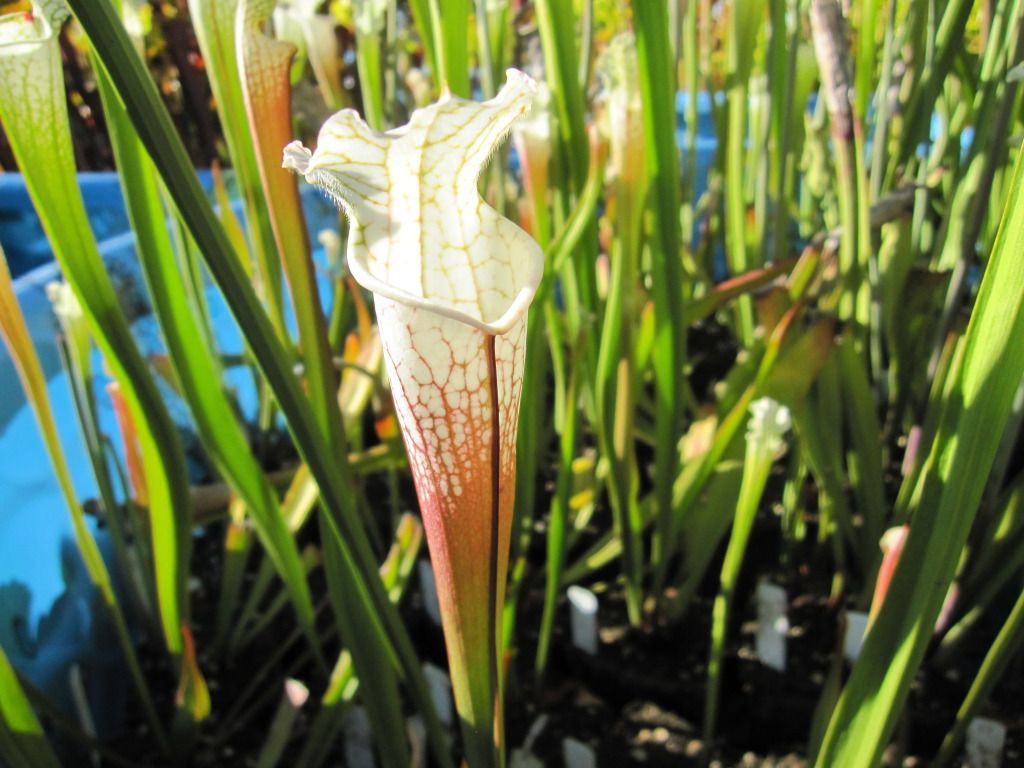 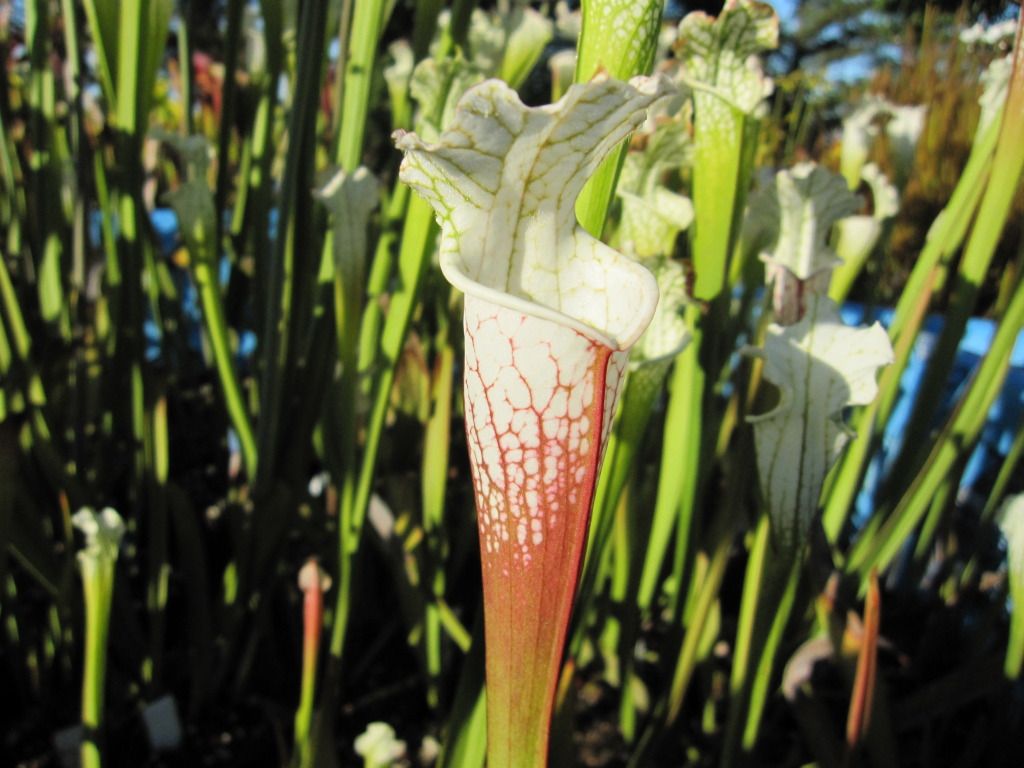 And here's the same clone F, but different individual. This plant was repotted, but not divided. This is a photo of the spring/summer pitchers. Picture was taken last month (May):  And here's the same exact clone, Clone F. I had not divided it at all last year (2011). Photo was taken last fall(2011)-notice how pure white it is: 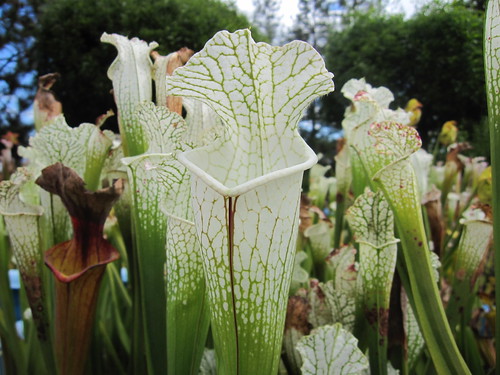 And here's the same clone (clone F) grown by my friend Rob Co-he had his under twin wall polycarbonate, which exhibited the most stunning white color. These are also fall pitchers from 2011: www.flickr.com/photos/rco911/6165414724/ |
|
|
|
Post by ICPS-bob on Jun 4, 2012 16:45:53 GMT
However, time has shown that there needs to be modifications to this definition, as some "pure white" clones can exhibit red colorations under certain environmental conditions. Below are recent photos of S. leucophylla Hurricane Creek White clone F, and to belabor the point, environmental conditions greatly affect the color of these clones. It seems as though dividing may impact the formation of anthocyanins in these plants-only time and a lot more observation will tell. Certainly, other factors can also influence anthocyanin formation. The cultivar description states: www.carnivorousplants.org/cpn/Species/v33n1p19_22.html#WhiteThere seems to be a couple of possibilities: 1) The red coloration is temporary and possibly the result of injury to those pitchers meristematic tissue when the plant was divided. If so, this color should disappear in subsequent pitchers. 2) There has been a genetic mutation in this clone over time and the red coloration has become a permanent feature. If so, the plants from this mutation should no longer be considered to meet the defined characteristics of the cultivar. Does that make sense? |
|
|
|
Post by meizwang on Jun 4, 2012 21:18:24 GMT
Hi Bob, definitely those are two very solid possibilities-thank you for your input! Injury and even stress may be the culprit, but the thought of a point mutation is also plausible.
It has been observed over the years that spring pitchers can produce red pigments, but the fall pitchers on the same exact plant are solid white. This does not discount the possibility that individual divisions could have asexual mutations (point mutations).
The red apple is a classic example of a point mutation-one branch on an otherwise green apple tree had red apples, and so that red branch was cloned, producing all red apples. Keep in mind that the red apple branch could also revert back to green after being cloned so many times.
Anyhow, If the cause of red pigments on HCW is from a point mutation (ie. there was an asexual mutation on that particular clone in the L1 layer of the epidermis, which genetically altered the plant permanently), then I would no longer regard that individual division as Hurricane Creek White.
Here's the portion of the cultivar description in question:
"In order to maintain this cultivar’s unique hardiness, color, and size characters, do not attach the cultivar name to any seedlings that do not show the large white pitchers of this Sarracenia leucophylla cultivar.)"
Based on this description, if you saw a clone with red traps as pictured above, would you consider it Hurricane Creek White, or does it depend on whether the red coloration is genetically permanent versus temporary? If it is proven that HCW can produce temporary red pitchers, but revert back to solid white pitchers later on, is the description clear and accurate, or does it need amending?
|
|
|
|
Post by ICPS-bob on Jun 4, 2012 22:21:05 GMT
Interesting discussion! Note that the official published description includes this sentence: "Mature late summer leaves are a bright white with no visible red venation." Does this imply that spring leaves might have red venation? I don't know. Another obvious question concerns the history (pedigree) of "clone F" and perhaps an extended period of observation.
Whether the description needs to be amended is a question for the official registrar of CP cultivar names, Jan Schlauer. Jan does not frequent this forum. I will ask him his opinion.
|
|
|
|
Post by meizwang on Jun 4, 2012 23:49:41 GMT
Thanks Bob, much appreciated!
My understanding is seeds were collected by Barry Rice from the original site before it was destroyed (Barry, if you're out there, feel free to chime in!). He gave me a community pot of seedlings (maybe 2004? I was definitely still in college), which turned out to be gems! I've been growing and observing them since then.
It seems very likely that all hurricane creek whites have interbred with regular and color forms of leucophylla at some point in the past, but the white genes are dominant. Since they were a minority of the original population that was destroyed, , the probability of having non-pure white genes mixed in his pretty high. They also flower at the same time as other leucophylla clones from Baldwin Co, AL.
|
|
|
|
Post by BarryRice on Jun 5, 2012 2:21:14 GMT
Hey Folks,
An interesting discussion. First, by way of clarification, this cultivar was actually John Hummer's baby. He knew of a site along Hurricane Creek that was filled with Sarracenia leucophylla that were very vigorous, and loaded with lots of white pigmentation. (If "white pigmentation" even makes sense!) What attracted John to the population was how vigorous they were, and also just how white they were. They were--in cultivation--much more vigorous than actual anthocyanin-free clones.
When he told me he wanted to make a cultivar of this plant, he was unsure how to proceed, since he thought that you needed to propagate cultivars only vegetatively (which is an understandable, but incorrect belief). I told him that if he wrote the cultivar description appropriately---essentially that these plants were vigorous and very white---it would do the job.
Some of the plants have varying amounts of red pigmentation, but you must admit that of all the photographs you sent, the amount of white pigment is really incredible, and you've got fantastic looking plants. They really stand out from more conventional S. leucophylla, and that's what attracted John Hummer's attention in the first place.
Incidentally, I noticed that in Stew McPherson's latest books, he and Don Schnell established the name Sarracenia leucophylla var. alba for these same plants. So you can go by the cultivar name, as regulated by the ICNCP, or the Latin name, as regulated by the ICBN. (Yes, this is the same situation that is already in place with Sarracenia minor 'Okee Giant', which also is called Sarracenia minor var. okefenokeensis.)
Cheers
Barry
|
|
|
|
Post by Not a Number on Jun 5, 2012 6:35:41 GMT
Just to toss in my 2 cents worth:
A few years ago a friend of mine received some 'Hurricane Creek White' seed from John Hummer himself. Hummer said 80-85% of the of plants from the seed would qualify as the cultivar. Presumably the other 15-20% would not show all the traits of the cultivar.
I have a S. leucophylla clone which I obtained in trade as 'Hurricane Creek White'. I was told the clone had come from John Hummer. I have been hesitant to call the 'Hurricane Creek White' because it produces very narrow pitchers in the spring. I didn't think the late summer pitchers were any bigger than my "regular" S. leucophylla. However the last couple years the late pitchers have been approaching the look of the standard photograph.
The pitchers only show red on damaged areas, however as the pitchers develop the area that transitions between green and white will often be a beige/caramel color that eventually turns to green. I've noticed this also on other clones.
|
|
john
Full Member
Posts: 30
|
Post by john on Jun 5, 2012 11:01:50 GMT
If I can add a little of my opinion to this interesting discussion, the first point to note is that seed raised cultivars always have potential to vary slightly. There are endless examples of seed cultivars that have slowly drifted away from the original description over generations and have to be re-selected to get them back on track.
The important thing with a plant of a seed raised cultivar is that it has the distinctive characteristics laid out in the cultivar description. As I read it, it is the colour of the mature autumn pitchers that is the unique characteristic here, and it looks like your plant fits the required description.
However, it is also showing more anthocyanin than would be ideal in the spring, so it is probably not a good parent to use for the next generation. It is starting to show a genetic drift that would eventually erode the uniquenss of the cultivar.
As regards changing the cultivar description, I'm not sure that is possible under the current rules. A cultivar description is not just a low tech 'photo' of the cultivar, it serves to DEFINE it. That is why cultivar descriptions should be written carefully, and edited of any superfluous chit-chat. An accidental comment will become part of the definition of the cultivar. It is possibly fatuous, but if you were to add "the pitcher has been a bit chewed by a snail" to a cultivar description, then technically no unchewed plant could be considered part of the cultivar.
Stewart McP has provided a botanical description that covers all of the "white topped" S.leucophylla, and Hurricane Creek White is a cultivar selected from that taxon, so S.leucophylla var alba 'Hurricane Creek White'. Seedlings that don't match the requirements of the cultivar definition would then be simply S.leucophylla var alba.
|
|
|
|
Post by meizwang on Jun 5, 2012 15:38:46 GMT
notanumber-great observation on the caramel color changing to pure white-I've seen this with HCW clone F and many other HCW clones as well. It seems when the trap just forms, there's a light amount of pigments on young traps that eventually fade away as the trap matures. If you look carefully, in the front left hand section of this photo, there are 2 or 3 young pitchers that just opened and have that caramel color: 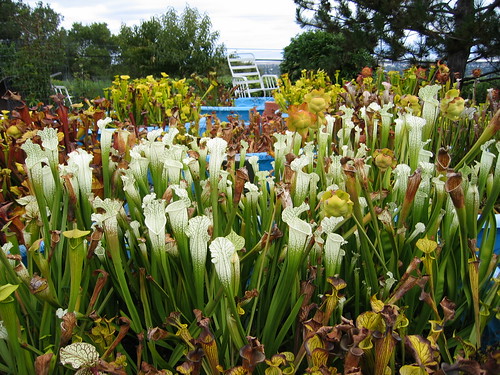 There's about a dozen different clones here, and for the most part, even though many of them have a lot of red in them during the spring, they pretty much all produce brilliant pure white fall traps. Despite the occasional red spring pitchers, I wouldn't discount any of these clones as unworthy of carrying on the HCW line down the road. I'm beginning to suspect that all S. leucophylla Hurricane Creek white plants can exhibit this red coloration based on environmental conditions. I also have some of the genetic material originally from John Hummer, and these plants behave similarly-red coloration in the spring pitchers, and pure white during the fall. Keep in mind they don't always have red in the spring-sometimes, the spring traps are pure white without a trace of pigments. |
|
|
|
Post by Alexis on Jun 6, 2012 15:53:02 GMT
Since the cultivar appears to be applied to ANY leucophylla var. alba from this one location, I don't think it's possible to assign a single set of characteristics to a batch of genetically different individuals. This is why I don't like 'batch' cultivars.
The most distinctive single var. alba from that location should have been assigned cultivar status IMO.
|
|
|
|
Post by meizwang on Jun 6, 2012 17:16:47 GMT
I hear what you're saying Alexis, and in many cases, I think you're absolutely correct. However, in the unique case of S. leucophylla Hurricane Creek White, I don't think having a single individual as the HCW cultivar would resolve this controversy, and it would exclude individuals worthy of a cultivar status. The issue is that it is suspected that ALL of these clones, even the best ones, can exhibit red coloration under certain environmental conditions. Here's another example, although not the best. On the same plant, there's an almost pure white trap, and then another trap with a lot more pigments. HCW clone C: 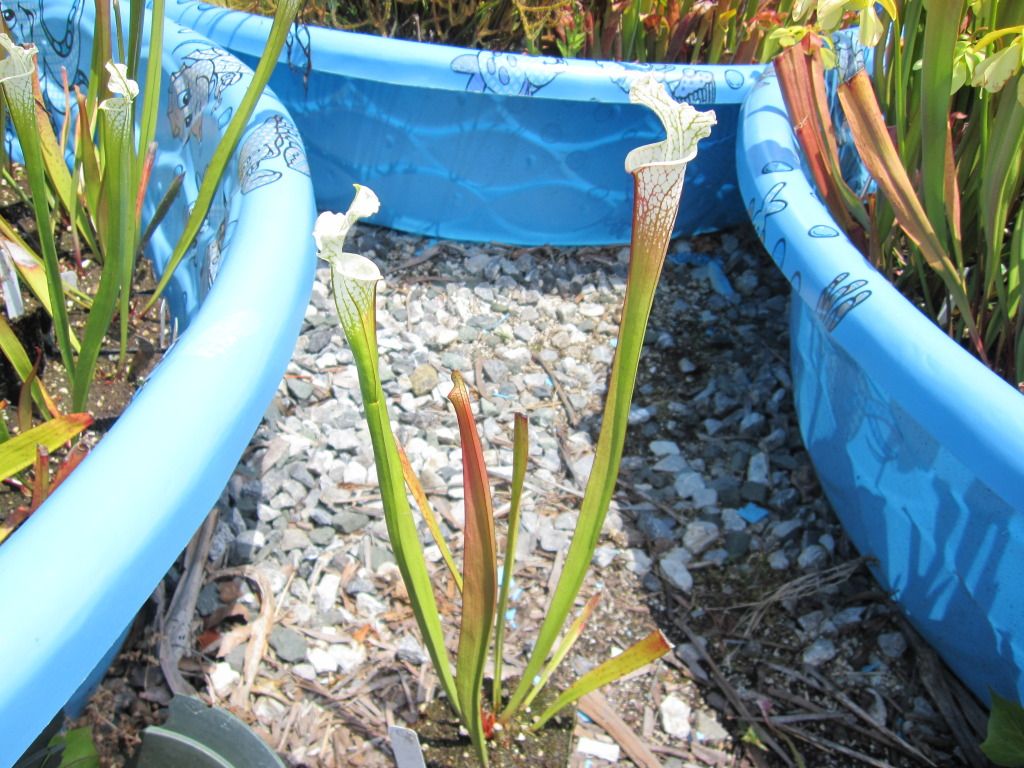 |
|
|
|
Post by Not a Number on Jun 6, 2012 20:28:35 GMT
Here are a couple of pitchers of the clone that I have that produces narrow pitchers in the spring. The second picture compares pitchers between that clone and a seed grown plant, seed from ICPS seedbank. Red spots on the narrow clone are probably due to a lingering fungal infection that started when I tried a popular Trichoderma soil additive several years ago. I thought I got rid of it finally but perhaps not. Or it could be bruising from wind damage with the pitchers battering each other.  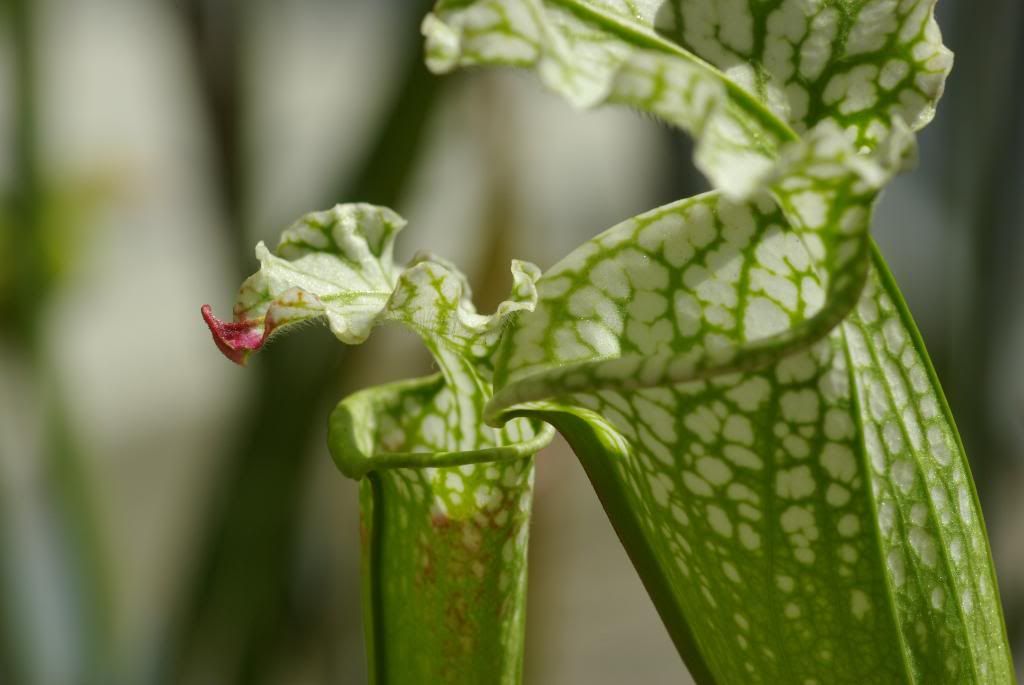 This is one of last years fall pitchers from the "narrow" clone: 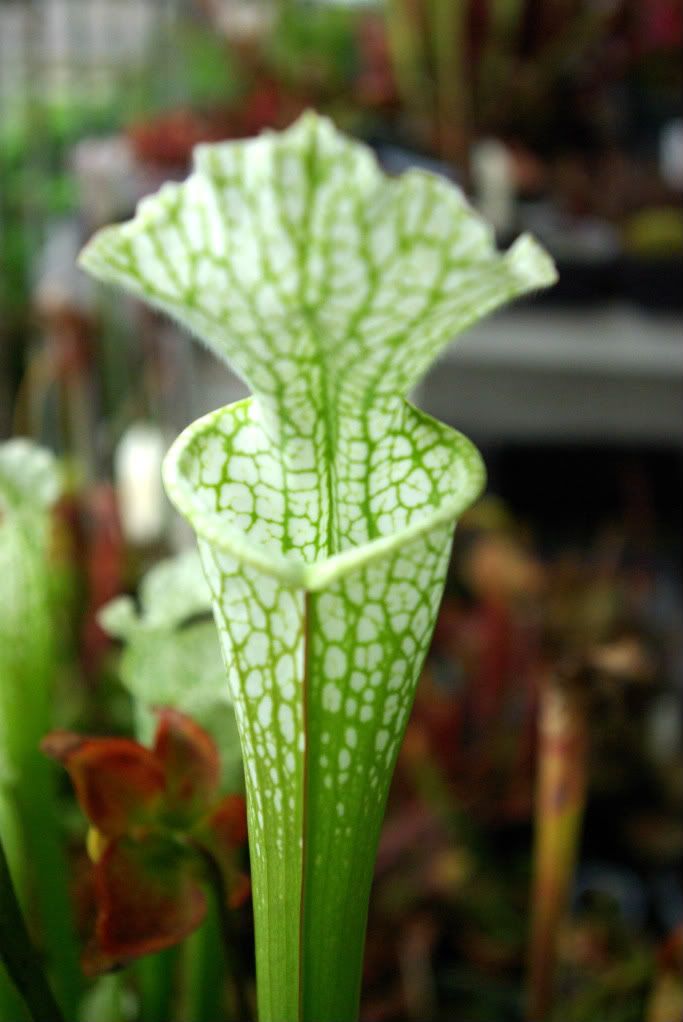 |
|
|
|
Post by Alexis on Jun 7, 2012 13:59:10 GMT
Yep, characteristics can appear under one grower's conditions that never occur under anothers. Some flava var. ornata clones can appear closer to var. rubricorpora when grown in polytunnels for example.
|
|
|
|
Post by meizwang on Jun 7, 2012 15:57:19 GMT
That is another excellent observation, and I'd like to take that point even further and say S. flava var. ornata can do the same thing outdoors. Below are the same exact clone(S. flava var. ornata Gulf Coast, FL) grown outdoors, growing side by side, sharing the same water, etc. Only difference is that they are in two separate pots: Look how red this one is: 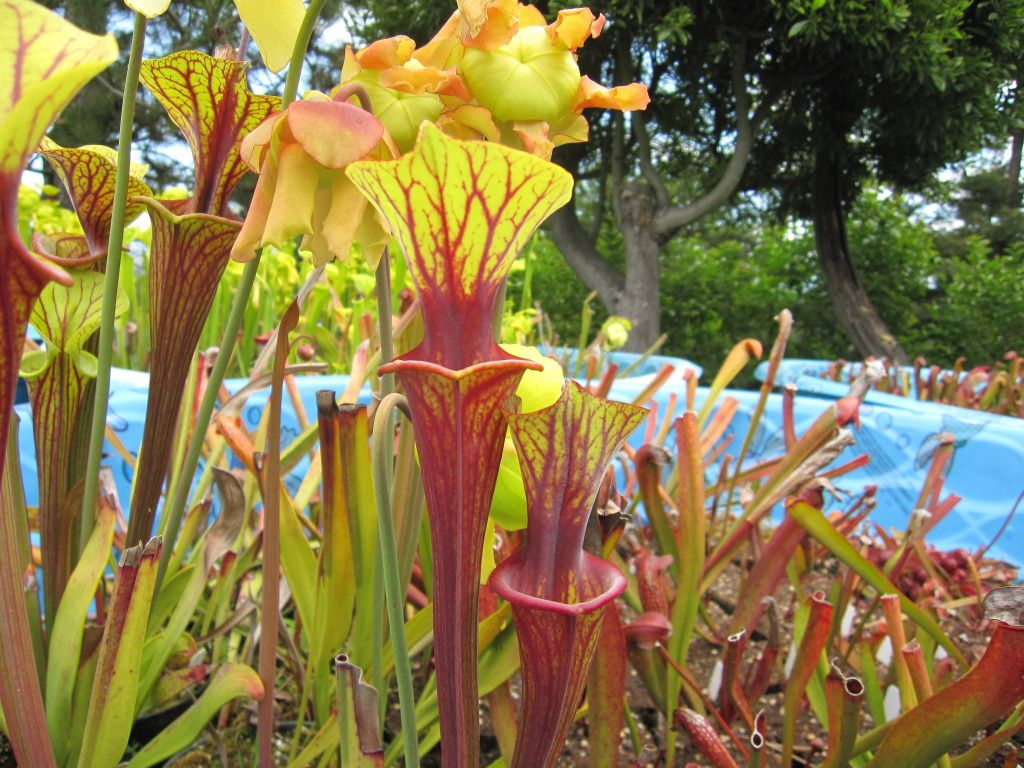 And this is what it normally looks like:  |
|
|
|
Post by Alexis on Jun 8, 2012 11:50:29 GMT
Wow, good example.
|
|







